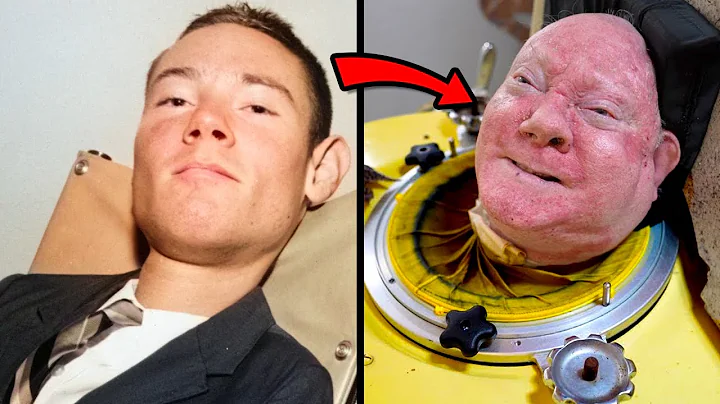CCTV's " Military Memory " is good, and it is now in its second season.
talks about the process of introducing the Su-27 and localizing it to form the J-11B (the Su-27 produced under domestic authorization is the J-11A). Many of the information points interviewed by the parties are quite good.

1: In the 1990s, China had no third-generation aircraft available, and neighboring countries began to obtain the advanced American third-generation aircraft . This created a generation gap for our country's second-generation aircraft, causing great pressure on our country's leaders and air force senior officials to introduce the Su-27 and The time requirement for building the production line was extremely urgent. The then deputy general manager of AVIC recalled that Cao Gangchuan, the then minister of the General Armament Department, said to them, do you know that the first person shot by the Soviet Union during the Great Patriotic War was the minister of equipment. Cao himself was the Minister of Equipment, which obviously put great pressure on his subordinates. At that time,
had to choose between self-development and introduction. In the end, the senior management believed that it was necessary to introduce the Su-27 twin-engine heavy fighter production line as soon as possible, and the time requirements for , Shenyang, and were very strict and urgent. The main reason was that the international situation of and were urgent. , Self-research “will take some time”.
2: Localization is a national project. It does not mean that Shenyang Aircraft Corporation is the only one to carry out it. As a main engine manufacturer, Shenyang Aircraft Corporation has participated in the participation of a large number of enterprises across the country. Among them, the leading unit for the localization of J-11B materials is Beijing Aviation Materials Research Institute , which leads the country. More than 100 companies were involved, and the entire work started from about 1997 to 1998, and it finally took ten years to achieve the localization of various materials.
For example, when the Su-27 was introduced, only the fairing on the nose of the aircraft and were made of composite fiberglass. The fuselage and wings were not composite materials (that is, a combination of many different man-made materials were used), while the J-11B used both. , and this technical achievement was later used on 歼10, 歼20.
3: The third-generation aircraft has a curved windshield, which is different from the flat windshield of the second-generation aircraft, that is, a bubble-type glass canopy. Due to the special curvature, optical distortion will occur, causing distortion of the pilot's field of view. This windshield optical distortion involves Materials, thermoforming, coating, assembly, and connection have turned out to be difficulties in localization. Due to the high technical difficulty, the unit responsible for the localization of the J-11B curved windshield failed to develop it successfully. At that time, it was only more than five months before the first flight of the model. If it could not be manufactured, it could only be imported from abroad.
results The Beijing Aeronautical Materials Research Institute was assigned to take over the task at a critical moment. The institute had previously accumulated technology. In order to create a localized curved windshield, it needed to purchase a key piece of equipment, which cost about 2.3 million yuan. This exceeded the budget. The institute has 2,000 employees. He donated his one-year bonus, and after deducting various expenses, almost everyone donated a bonus of 8,000 yuan, and finally created a domestically produced windshield at the last moment.
3: The J-11B provides a platform for testing and experimentation of a large number of domestically produced advanced components. Many domestic technologies were tested, verified and finalized for the first time on the J-11B. The
one is an air-launched missile ejection launcher. That is, the missile is not launched directly from the aircraft missile rack. Instead, it is ejected from the launcher first and then ignited and accelerated. This can protect the aircraft and the pilot. AVIC Air-to-Air Missile Research Institute The first missile ejection device developed was installed on the J-11B. During the first launch experiment, the pilot pressed the missile launch button in the air, and the missile got stuck and did not launch. This was later solved.
One is a diffraction head-up display, which allows pilots to see the required information without having to lower their heads. The diffraction head-up display on the third-generation fighter aircraft requires high definition regardless of day or night, with both forward and backlighting. Institute of Optoelectronics of the Aviation Industry After a long period of development, it was finally successfully developed in 1995, but there was never an opportunity to test the aircraft model. Even when the J-11B made a formal localization plan in 2000, the diffraction HUD was listed as scalable. Equipment rather than mandatory equipment, because it is considered to be technically risky and difficult, and has not been installed in China before, but this also gives the domestic diffraction HUD a good model opportunity. The chief designer of of Institute of Optoelectronics said in an interview with reporters that this is a good opportunity. If he did not take part at that time, the team might be disbanded, and the delay would not be three to five years.
One is the Taihang engine . Before the introduction of the Su-27, this type of engine was already under development. However, due to the many problems with domestic engines, the risk of test flight on the single-engine fighter J-10 is very high, and it can only be used on the twin-engine heavy fighter. Therefore, the J-11 aircraft is the only opportunity to use a combination of two domestic + imported engines. The Taihang engine also suffered a serious accident in which a large first-level blade broke. The Taihang engine was also able to continuously discover and solve faults. The final form was eventually put into mass production, reaching a usable level. Some thoughts after reading
.
introduces advanced weapons and makes them localized. On the one hand,
meets the urgent requirements of the situation. Time waits for no one. On the other hand,
also provides domestic advanced components that have been developed, such as engines, diffraction heads-up displays, Missile ejection launchers provide a testing platform, which avoids the problem of having a product but no flight model test platform. On the one hand, the localization results of
, such as fuselage and wing composite materials, are also used in other self-developed domestic fighter jets.
However, in the long run, , Chengfei , which has been self-developed from the third generation to the fourth generation, finally counterattacked. It can be said that the fate of the
family began to part ways from the third generation era. The
family wanted to introduce the The third-generation machine is domestically produced. The
family is taking the self-developed third-generation machine.
's understanding of aircraft technology has been completely different from this time on.
has completely self-developed experience in third-generation aircraft. In the era of fourth-generation aircraft, Chengdu Aircraft's J-20 solution has stood out.
This illustrates the importance of system self-research. Only when the system is designed by oneself can one know and understand it thoroughly, and the ability will be greatly improved. System self-research and core component self-research are both important.
I previously read an interview with the person in charge of the COMAC project. He particularly emphasized that C919 is self-developed. The overall design of the aircraft and the aerodynamic shape are all done by ourselves. Even if many parts are imported in the early stage, they will gradually be domestically produced in the future. But it is very important that the entire C919 machine is self-developed. There was a misunderstanding about this sentence at first. I thought that C919 is an assembly product. The core components such as the engine are imported. What is the technical content of the assembly product?
Caroline Covey, vice president of Boeing Commercial Airplanes , once said: "If people could assemble the parts they bought and let them fly, there would not be only two major aircraft manufacturers in the world."
C919 Chief designer Wu Guanghui also told the media: "COMAC's intellectual property rights are also reflected in the integrated control of systems." "There are millions of interfaces on the C919 aircraft, which are related to hydraulics, avionics, etc. The connection between systems is by no means a simple splicing. How to connect depends on the design of the aircraft. "
can now understand more and more the importance of self-development of large and complex systems."
Of course, Shenyang Aircraft Corporation launched the localization of and Sukhoi series more than 20 years ago. It was also a strategic arrangement of the country and a realistic choice when the country was in urgent need of advanced fighter aircraft. However, this path objectively put Shenyang Aircraft Corporation Limited at a disadvantage. Flying has been tied to the Sukhoi series for nearly 30 years. The main energy and resources have been invested in the localization and continuous improvement of Sukhoi, but it has affected the self-research route. Of course, Shen Fei will be able to build more world-class fighters by completing its self-developed new generation fighter J-35 and continuing on the road of self-development.





















